All about volumetric geogrids
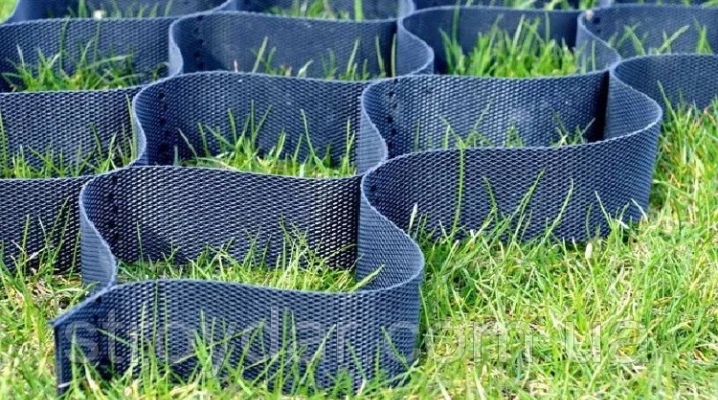
The construction industry is developing more and more every day. It currently uses the latest materials, raw materials, equipment, machinery, and innovative solutions. The road construction industry is also actively developing. It was here that many different modern materials began to be used, one of which is a volumetric geogrid.
If you are interested in information about this building material, what is its peculiarity, where and when it is used and how it is correctly mounted, this article is for you.
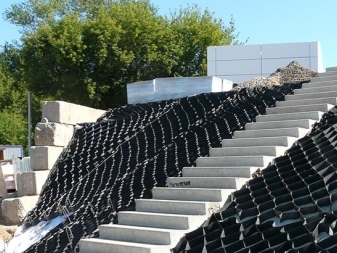

Peculiarities
Geogrid is a building material that belongs to geosynthetics... Manufactured in the form of a two-dimensional or three-dimensional honeycomb structure. For production, polyester needle-punched fiber, polyethylene or polypropylene tapes are used.
All cells of the structure are connected to each other by welding, the seams are of high strength.
A volumetric honeycomb structure, for the production of which polymer and synthetic tapes were used, is called a volumetric geogrid. It is she who is widely used in various industries of construction. This is due to the advantages and technical characteristics of the material. Its modular cell design has a number of features.
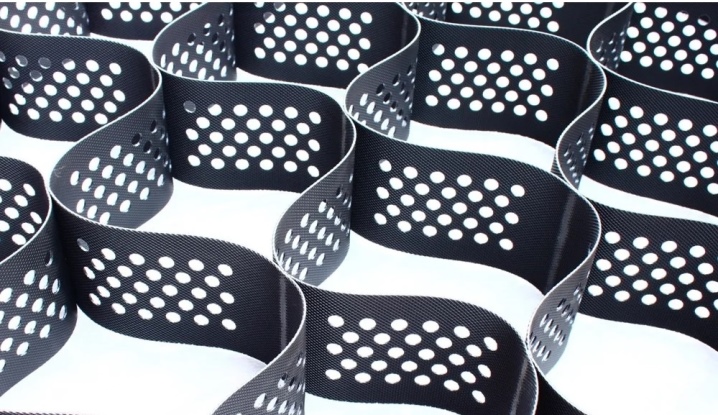
Using this material you can:
- increase the bearing capacity of the entire structure of the building;
- increase the seam rupture load factor - no more than 25 MPa;
- increase the draining property;
- to increase the level of resistance of the object to the effects of dynamic loading;
- significantly reduce the cost of construction;
- to increase the reliability of the construction object;
- extend the life of the construction object.
The volumetric geogrid is also characterized by low damage rate, high anti-corrosion properties and ease of installation.

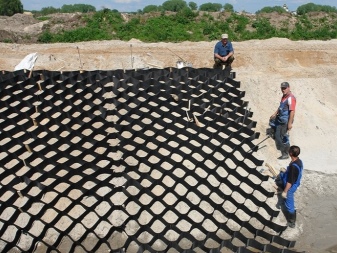
Despite the fact that the design of the material at first glance seems rather simple and not difficult to manufacture, it has excellent technical characteristics:
- strength - more than 20 kN / m;
- the elongation coefficient at the highest loads is less than 35%;
- frost resistance level - more than 90%;
- coefficient of resistance to cyclic loads - more than 90%;
- coefficient of resistance to aggressive environment - more than 90%;
- seam strength index - 80-85%.
The size varies. Depending on the dimensions of the structure, you can determine the area that it will cover.
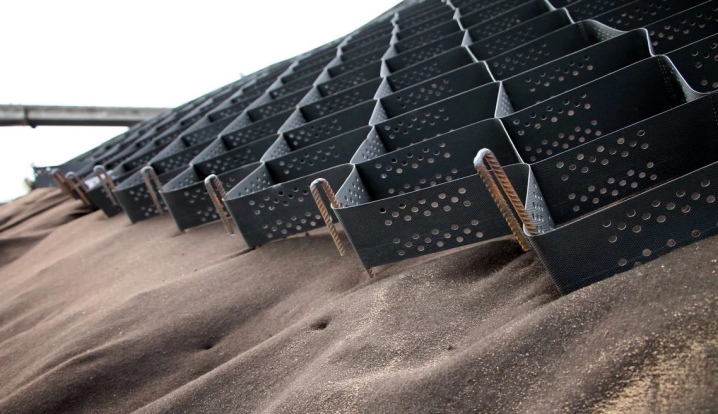
Characteristics of species
In the modern construction market today there is a wide selection and assortment of volumetric geogrids. Many manufacturers are engaged in the manufacture of this material. We list only the most popular and well-proven products.
Fortek
The volumetric polymer geogrid of this company is used in the process of soil reinforcement during the construction of highways and railways to strengthen slopes and embankments, coastal zones. It is characterized by strength, resistance to aggressive effects, long service life, good water resistance. The geomodule has the following technical parameters:
- strength - not less than 21 MPa;
- seam breaking load factor - 925-1300N.
The model range of construction for strengthening "Fortek" is quite diverse. It is worth noting products such as volumetric geogrid 22/15, 30/5, 44/5.
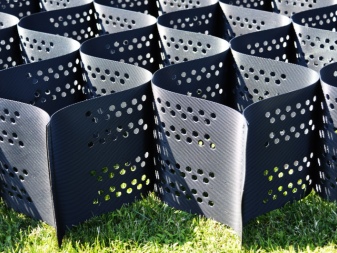
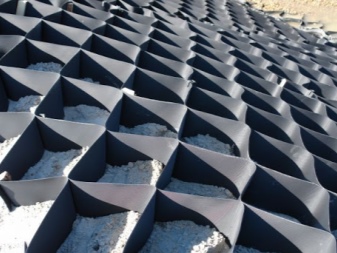
"Geospan"
This is an ideal solution for strengthening the roadbed, slopes, and forming a drainage system. The range of plastic volumetric gratings of this company is quite wide and varied, but they all have excellent technical characteristics and comply with the standards.
It is a durable and durable material.
The main functions of the Geospan 3D geogrid include:
- protection of soil from erosion;
- increasing the coefficient of waterproofing;
- reinforcement of the entire structure.
The most commonly used models are OP 20/20, OP 30/10, OP 40/15.

Rittex
Geogrids under this name are manufactured by Ritten Geosynthetics. Structures are manufactured in accordance with all regulatory requirements, GOST. The products are certified, the products are of high quality, reliable. The most modern and durable materials are used for manufacturing. Before entering the consumer market, they undergo a series of laboratory tests, which must confirm the compliance of the technical parameters with all requirements.
The big advantage of the Rittex volumetric plastic geogrids is their long service life - 50 years. The following models are in demand:
- 50/420 1.35 mm thick;
- 22/75 with a thickness of 1.22 mm;
- 22/75 1.35 mm thick.
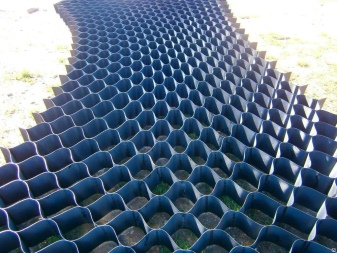
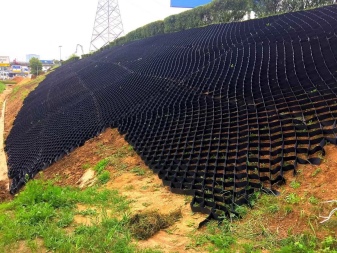
Where is it applied?
Given the excellent technical characteristics and features that are inherent in modular construction, it is not at all surprising that the material is widely used in various areas of construction.
Here is a list of the main, but not all, situations where the structure can be laid:
- in road construction for earth cover reinforcement;
- for reinforcing the sub-ballast layer of railway embankments;
- to strengthen the slopes of highways, to securely fix steep slopes along the roads;
- when works related to anti-erosion and seismic protection of slopes;
- to ensure maximum fixation and protection of railway track cones;
- during the construction of winter roads;
- to enhance flooding zones;
- during the construction of retaining walls.
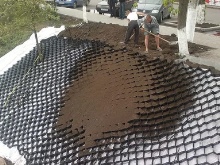
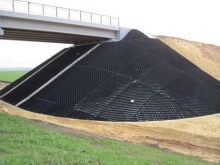
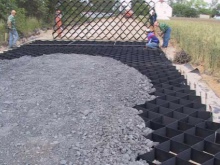
As you can see, the material has found the greatest application in road and railway construction. It is also worth noting that the structure is often used in the oil industry due to the main advantage of the volumetric geogrid - an increase in the bearing capacity of the structure and object.
Laying technology
From all of the above, we can conclude that the geogrid is a very important structural element both when installing a new road surface and when strengthening slopes, the correct installation of which affects not only the quality of work, but also the duration of operation of the entire structure.
In order for the geogrid to function as efficiently as possible, it must be laid correctly, adhering to all installation standards. It is mounted according to the design and technical requirements, which are individual for each case. But there are certain stages that must be performed during installation:
- prepare the base;
- perform cutting of the initial deepenings;
- distribute the geogrid over the site and lay it down;
- fix if necessary;
- cover with an exfoliating layer, tamp.
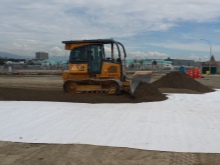

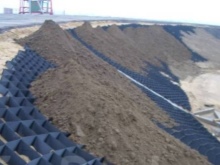
Fastening of the structure is carried out using special U-shaped anchors, for the manufacture of which wire up to 3 mm thick is used. Every 10 meters, fasteners are installed along the length of the lattice, and every 2 meters - along the width.
How the lattice is laid is shown in the next video.













The comment was sent successfully.